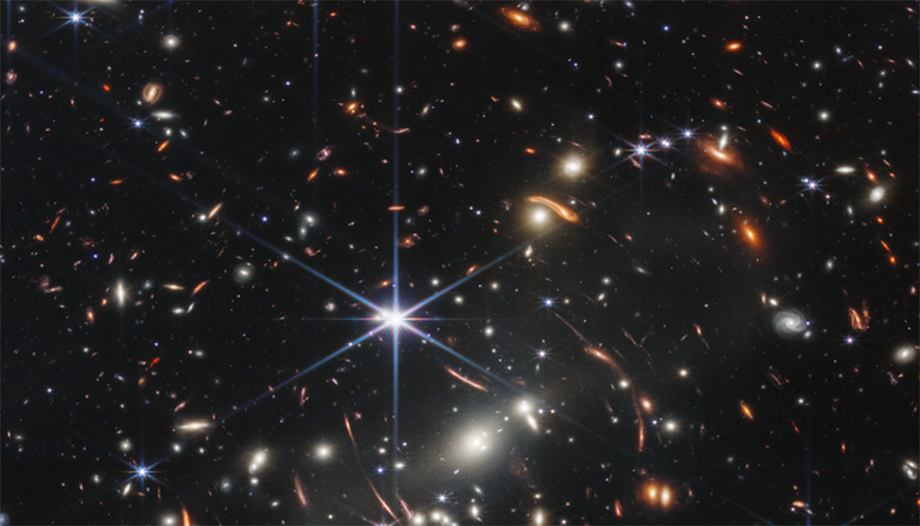Translation of the article into English
The U.S. president released the deepest and sharpest infrared image of the distant universe taken to date at the White House on Monday.
The photograph shows the SMACS 0723 galaxy cluster as it looked 4.6 billion years ago (that's how long it has taken light to reach the lenses of the James Webb Space Telescope that captured it).
It is impressive to contemplate how hundreds of galaxies, each one with its hundreds of thousands of stars, squeeze together to appear in the color photo.
As NASA explains, the frame captures a portion of the universe as small as a person on earth would see a grain of sand held at arm's length. How much more we have left to explore!
With the delivery of its first images, Webb has proven to be the world's premier space science observatory, taking over from the legendary Hubble telescope.
This marvelous ingenuity is the result of collaboration between the American, European and Canadian space agencies, however, President Biden took the liberty of jumping a day ahead of the agreed release date with the project partners to put on his medal and state: "These images are going to remind the world that America can do great things, and remind the American people, especially our children, that there is nothing that is beyond our capability.
The phrase is especially shocking when, just days before, the president had signed an executive order to "deny unborn children their most basic human and civil right, their right to life," as the archbishop of Baltimore and president of the Committee on Pro-Life Activities of the American Episcopal Conference would affirm.
Of course, these are two very different issues and it may seem crude to mix them, but, at bottom, both actions reveal the self-sufficiency, not of a person, but of a system that truly believes that "there is nothing that is beyond our capacity".
The proud man does not flinch at the evidence of unborn human life, not even at the thrilling mystery of unfathomable space. If I am God, who prevents me from doing what I want?
It was in the early 1980s when I had the good fortune to see one of the most famous popular science series in history: Cosmos, by Carl Sagan. I always repeat that, paradoxically, this magnificent work of a convinced and militant agnostic was key in my life of faith.
I remember being ecstatic contemplating the images of our universe and listening to his clear explanations that made me admire the beauty of nature and at the same time the genius of the human spirit that is capable of understanding and making sense of it.
Those were the years of the cold war, when the fear of a nuclear hecatomb hovered over the collective subconscious. Films like "The Day After" or "War Games" brought us face to face with the harsh reality: life on earth hangs by the thread of the arrogance of four powerful people or a badly configured computer.
In my childish conscience, I could not find an explanation for the double aspect of the human being: someone who is capable of the best and the worst.
Disappointed, I found the key in the catechesis of First Communion (those wonderful years), when we sang "I thought man was great because of his power, great because of his knowledge, great because of his courage, I thought man was great and I was wrong, for only God is great".
I discovered then, and after 40 years of experience I continue to corroborate it, that every time the human being tries to take the place of God he crashes miserably and that the truly great people are those who, putting everything on their side, recognize that they do not know everything, that they cannot do everything.
They are those who, contemplating the immensity of the cosmos, are able to see its absolute spatio-temporal insignificance and, therefore, the absolute value of each inhabitant of planet Earth.
In these 20s of the 21st century, when the nuclear briefcases have been dusted off again, we need men and women capable of being moved by the inalienable value of every human life, people who put all their abilities, not in favor of death, but in favor of life.
Hopefully, the contemplation of the Webb's images can help us not to become arrogant, not to be mistaken about the human condition and to understand that it is precisely because we are so small and fragile that we are so valuable.
Like a glass toy.
Journalist. Graduate in Communication Sciences and Bachelor in Religious Sciences. He works in the Diocesan Delegation of Media in Malaga. His numerous "threads" on Twitter about faith and daily life have a great popularity.












